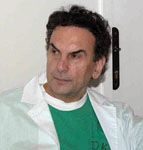Surgery for Penis Enlargement: Summary
Conclusion About Tissue Engineering
There are still ethical and medical dilemmas without uniform indication for penile enhancement surgery.
The operative techniques and assessment of the results are currently not standardized in medical literature with reports claiming exceedingly better results then generally possible. (lies)
Several reports advocated different methods for penile girth enhancement.
Beside autologous lipofilling as the method most commonly employed, autologous dermal-fat grafting was also reported.
Possible complications in this treatment option include graft lost, unsightly donor-site scar, temporary or permanent penile shortening and penile deformities.
A critical assessment of previous reports in medical literature points out that reported disappointing results were mainly a consequence of the post-operative fat re-absorption.
To reduce the chance of post-operative fat re-absorption, Asaadi and Haramis recommended irrigating the fat with a solution of 100 U of regular insulin to stabilize lipocyte membrane.
Yukel investigated recently the local effect of insulin and growth factors on free fat graft survival.
He found that long-term local delivery of growth factors have potential to increase fat graft survival.
Ayhan reported positive effect of ß–blockers in increasing free fat graft survival in an animal study.
However, a report by Chajchir showed no beneficial effect of insulin or centrifugation on adypocyte survival during their transplantation.
Tissue engineering in penile enhancement surgery is a new approach to fabricate a new functional tissue from autologous cells and consequent penile girth augmentation.

In Professor Perovic's study, they applied a principle of transplanting autologous cells onto a biodegradable scaffold that provided appropriate mechanical strength to induce three-dimensional growth of a new functional, autologous tissue.
They hypothesized that expanded cells harvested from the scrotum could migrate into the biodegradable and biocompatible scaffold, would form viable tissue and would start its degradation to support the growth of a completely normal tissue without inflammation.
Dr Perovic and the other urologists used macroporous, biodegradable PLGA (polylactic-co-glycolic acid) scaffolds whose porosity ranged between 85 and 90%.
Average pore dimension was between 250 to 400 mm which is adequate for migration and growth of fibroblasts who were naturally selected during the cell proliferation period and whose diameter was about 10–15 mm.
Earlier studies with non-woven mesh scaffolds have found that pore size, pore orientation, fiber structure and fiber diameter can influence cell behavior and tissue development.
The pores of PLGA scaffolds are interconnected to each other which provides adequate communication of growth factors, nutrients and oxygen as well as seeded cells migration and intracellular matrix and vascular regeneration.
The biocompatibility and degradive properties of PLGA scaffold were excellent and this finding confirms previous reports.
The degradation rate (also called “absorption” or conversion into tissue) ranged from 6 to 16 weeks after pre-treatment with 75% ethanol.
Histological examination six months after intervention demonstrated newly generated tissue which appeared viable with significant cell number, collagen content and ingrowth of capillaries.
The clinical experience with this new treatment approach for penile girth enhancement showed its remarkable safety, reproducibility, superior cosmetic results, low morbidity and low incidence of postoperative complications compared to previously established procedures.
The possibility of performing this procedure under local anesthesia and with a short hospital stay (mean 2.11 days) are the points in favor for the low cost-effectiveness of this approach.
Mean operative time was approximately one hour and final surgical outcome concerning penile girth gain was almost 3 cm.
Erectile dysfunction or sensitivity deficiencies were not reported in immediate postoperative period nor later.
Except for the patients with seroma formation, all patients resumed their sexual activity 4–6 weeks after surgical intervention.
Previous surgery often limits the availability of compliant skin.
Extensive dissection and placement of the scaffold under the lifted neurovascular bundle provides the most favorable conditions for successful outcome in these cases.
The only good functional results available to assess objectively delayed final outcome of penile enhancement surgery (including patient satisfaction with the achieved surgical results) is the series by Austoni.
He reported true increase in volume of the corpora cavernosa by bilateral saphenous grafting of tunica albuginea with excellent patient satisfaction and no complications.
However, this technique enables penile girth augmentation only in erect penis with reported postoperative increase in diameter that ranged from 1.1 to 2.1 cm.
In the Perovic study, minimal flaccid girth gain encountered was 1.9 cm and ranged up to 4 cm for the majority of patients, even in the group with previous surgery. [everybody does NOT get the same result]
To address this controversy in the outcome, the present data showed no association between penile enlargement surgery and penile shortening.
Importantly, in the cases of combined penile girth enlargement and release of ligaments, placement of the scaffold proved to be suitable to prevent ligament reattachment and consequent penile shortening.
Penopubic ligamentolysis provides apparent but not real lengthening since penile structures remain unchanged. Thus, any gain in penile length is noticeable in flaccid state but minimal in erect state. [primarily an aesthetic procedure]
A vacuum device was advocated 5–10 minutes twice a day due to the tendency for temporary penile retraction during scaffold degradation, which occurs one to three months postoperatively.
Thus, there were no cases of permanent penile retraction. Consequently, this technique could be most reliably applied for successful penile girth augmentation even after previously failed attempts.
Moreover, this technique can be repeated also one year after primary enlargement in order to gain additional girth.
In some patients, new procedure to increase girth gain is required as a consequence of penile dysmorphic disorder.
More then two thirds of 84 patients, claimed to be completely satisfied with achieved surgical results while almost 80% of patients scored surgical intervention as “excellent” and “very good” (44.05 and 36.90%, respectively). [NOT everyone was happy with the gains achieved]
There was also high level of agreement between the patients and surgeons about satisfaction with the accomplished results.
In total, mean value of self-scored genital appraisal was “very good” while two-third of patients were satisfied with penile girth in flaccid and erect state (63.09 and 69.09%, respectively).
Dr Sava Perovic's approach is a straightforward and useful method to reduce the negative psychological impact of low genital appraisal among certain segments of the male population worldwide.
Although the scaffold consisted of biodegradable synthetic polymer, possible limitations of this concept could be the absence of biologic recognition.
As an approach toward the incorporation of cell-recognition domains into these materials, copolymers with amino acids have been synthesized. Other biodegradable synthetic polymers, including poly (anhydrides) and poly (orthoesters), can also be used to fabricate scaffolds for genitourinary-tissue engineering with controlled properties.
However, taken together, this approach represents potentially important improvement in the field of genital reconstructive surgery.
Conclusion
Autologous tissue engineering using biodegradable scaffolds as a carrier is a proven and safe therapeutic approach for penile girth enhancement.
This procedure shows significantly lower complication rate then previously established procedures.
Other advantages are simplicity, low morbidity (incidence of ill health), reduced operative time and bigger penises. next: Update
